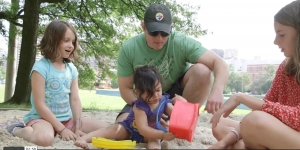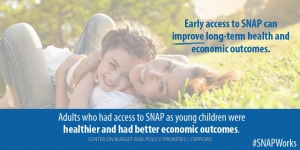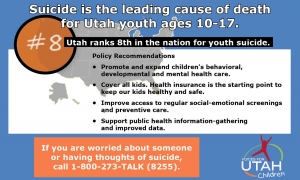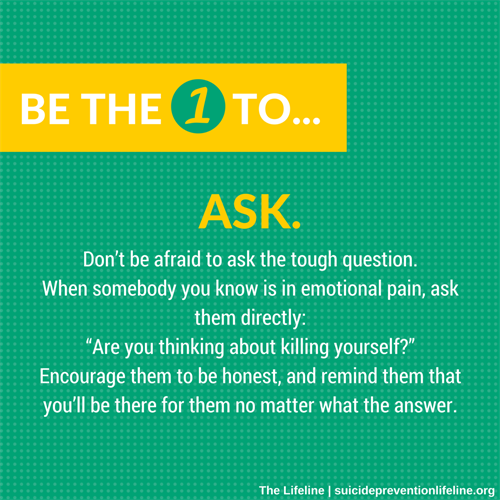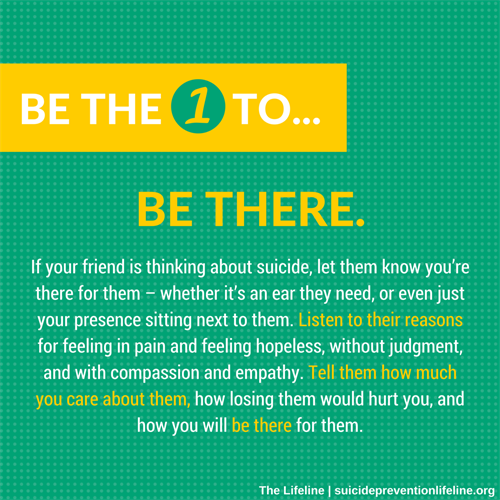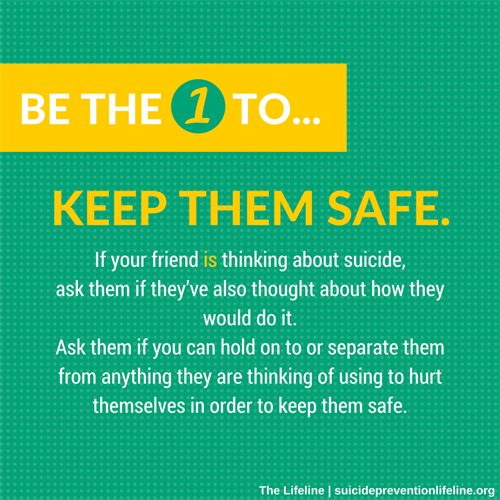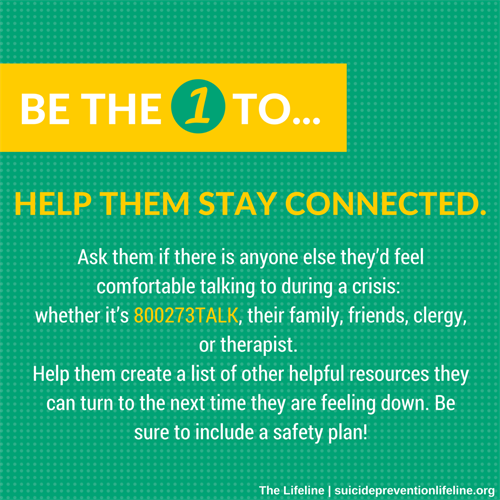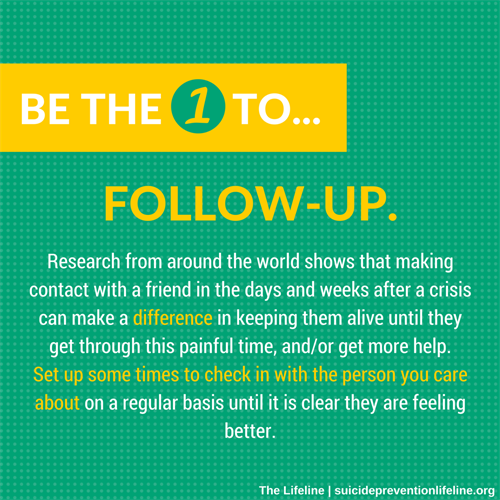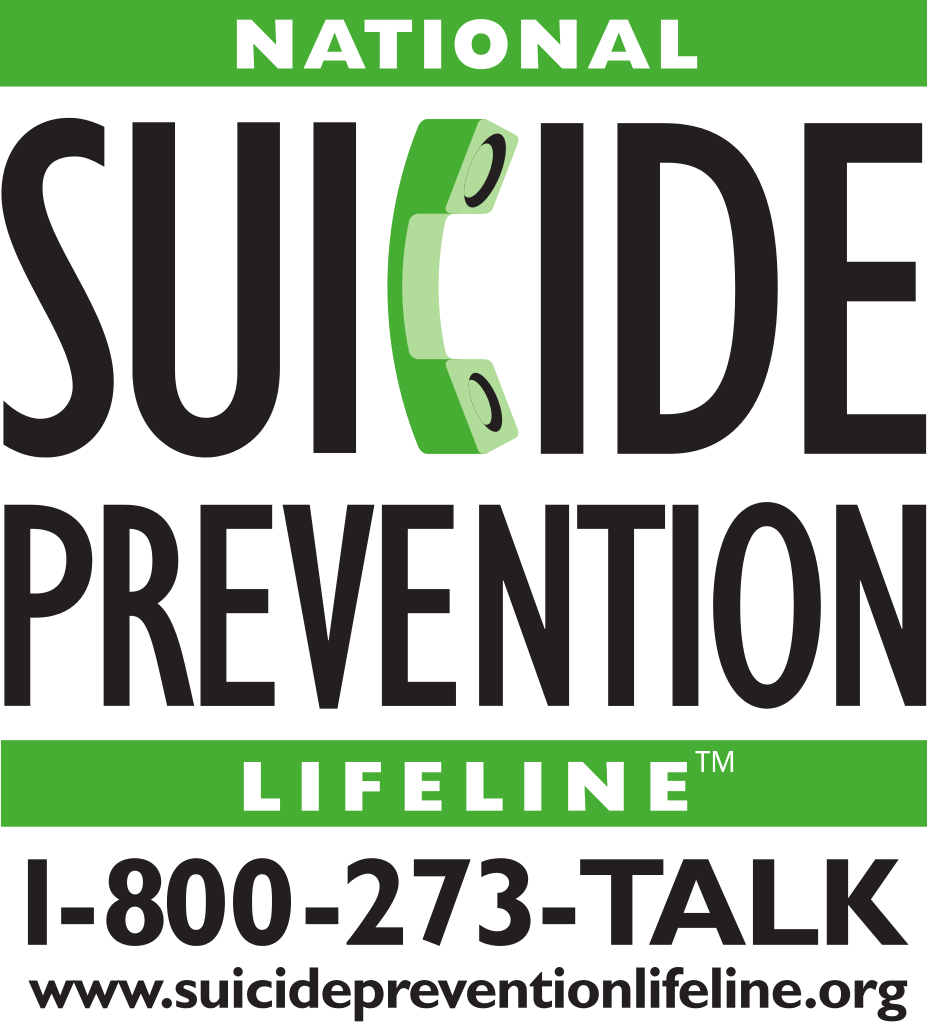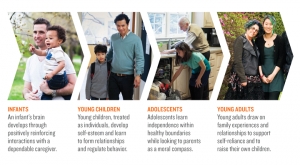Health
How are kids doing in my county?
New local data for each county in Utah are now available at the Voices for Utah Children website. Each county-level profile includes child demographics and measures of child-wellbeing related to education, health and economics.
Here are just some of the questions you can answer with the new data:
- What is the average student/teacher ratio at local schools?
- What percent of kids are chronically absent from local schools?
- How many children were victims of abuse in my county?
- What is the children’s health insurance rate in my county?
- How many local kids are living in poverty?
Check it out here:
Kids Count County Data Sheets
For 30 years now, Voices for Utah Children has called on our state, federal and local leaders to put children’s needs first. But the work is not done. The children of 30 years ago now have children of their own. Too many of these children are growing up in poverty, without access to healthcare or quality educational opportunities.
How can you be involved?
Make a tax-deductible donation to Voices for Utah Children—or join our Network with a monthly donation of $20 or more. Network membership includes complimentary admission to Network events with food, socializing, and opportunity to meet child advocacy experts. And don't forget to join our listserv to stay informed!
We look forward to the future of Voices for Utah Children and we hope you will be a part of our next 30 years.
Special thanks to American Express, our "Making a Difference All Year Long" sponsor. 
New Video: The Utah Health Coverage Gap
This new 3-minute video, featuring Lincoln Nehring, President and CEO of Voices for Utah Children and policy experts at the Georgetown Center for Children and Families, describes the plight of Utah families in the healthcare coverage gap. In Utah, a single mom with two children must earn $756/month or less to qualify for Medicaid. "That is painfully low," points out Nehring. In most other states, a parent can earn triple that amount and still qualify.
Joan Alker of Georgetown lists three reasons Utah should expand access to coverage:
- A healthier parent is a better parent.
- Children are more likely to be insured if their parents are insured.
- The whole family must be insured to protect the family from medical debt and bankruptcy.
The good news? "States can expand Medicaid at any time—the sooner the better," says Nehring.
Utah Health Coverage Gap from Georgetown CCF on Vimeo.
For 30 years now, Voices for Utah Children has called on our state, federal and local leaders to put children’s needs first. But the work is not done. The children of 30 years ago now have children of their own. Too many of these children are growing up in poverty, without access to healthcare or quality educational opportunities.
How can you be involved?
Make a tax-deductible donation to Voices for Utah Children—or join our Network with a monthly donation of $20 or more. Network membership includes complimentary admission to Network events with food, socializing, and opportunity to meet child advocacy experts. And don't forget to join our listserv to stay informed!
We look forward to the future of Voices for Utah Children and we hope you will be a part of our next 30 years.
Special thanks to American Express, our "Making a Difference All Year Long" sponsor. 
New Report Finds that #SNAPworks for Kids
A new report by the Center on Budget and Policy Priorities finds that the Supplemental Nutrition Assistance Program (SNAP) spends just $1.35 on average per person per meal for households with children, yet lifts millions of families and their children out of poverty. Here are some other key findings of the report:
- SNAP kept about 10.3 million people out of poverty in 2012, including about 4.9 million children.
- SNAP helps families put food on the table. Food insecurity — limited access to enough food for an active, healthy life — among children falls by roughly a third after their families receive SNAP benefits for six months.
- Some evidence suggests that children receiving SNAP are less likely than low-income non-participants to be in fair or poor health or underweight, and their families are less likely to trade off paying for health care and paying for other basic needs, like food, housing, heating, and electricity.
- Children who receive SNAP do better in school. SNAP participation can lead to improvements in reading and mathematics skills among elementary children, especially young girls, and increase the chances of graduating from high school.
- Adults who had access to SNAP as young children reported better health and had lower rates of “metabolic syndrome” (a combined measure of the incidence of obesity, high blood pressure, heart disease, and diabetes), and women who had access to food stamps as young children reported improved economic self-sufficiency (as measured by a combination of employment, income, poverty status, high school graduation, and program participation).
For more information, see the complete report:
SNAP Works for America’s Children
For 30 years now, Voices for Utah Children has called on our state, federal and local leaders to put children’s needs first. But the work is not done. The children of 30 years ago now have children of their own. Too many of these children are growing up in poverty, without access to healthcare or quality educational opportunities.
How can you be involved?
Make a tax-deductible donation to Voices for Utah Children—or join our Network with a monthly donation of $20 or more. Network membership includes complimentary admission to Network events with food, socializing, and opportunity to meet child advocacy experts. And don't forget to join our listserv to stay informed!
We look forward to the future of Voices for Utah Children and we hope you will be a part of our next 30 years.
Special thanks to American Express, our "Making a Difference All Year Long" sponsor. 
Using Data to Make a Difference
In the work that we do, it is imperative that we use data to inform our decisions and help children and their families access the resources they need. But with so many different tools and resources, it can be hard to find trusted information. That’s where the Data Center comes in. The Annie E. Casey Foundation’s KIDS COUNT Data Center contains thousands of child well-being indicators related to education, poverty, health and youth risk factors. By being able to filter by state, city, county and congressional district, users are able to access data that is relevant in their communities. Visit the Data Center today to enact change.
Here are some examples of the data tools you can find at the Kids Count Data Center.
Visit the Kids Count Data Center to find data you can share and embed on your own website!
For 30 years now, Voices for Utah Children has called on our state, federal and local leaders to put children’s needs first. But the work is not done. The children of 30 years ago now have children of their own. Too many of these children are growing up in poverty, without access to healthcare or quality educational opportunities.
How can you be involved?
Make a tax-deductible donation to Voices for Utah Children—or join our Network with a monthly donation of $20 or more. Network membership includes complimentary admission to Network events with food, socializing, and opportunity to meet child advocacy experts. And don't forget to join our listserv to stay informed!
We look forward to the future of Voices for Utah Children and we hope you will be a part of our next 30 years.
Special thanks to American Express, our "Making a Difference All Year Long" sponsor. 
It's Suicide Prevention Week
For more details about the youth suicide problem in Utah and possible policy solutions, see Teen Suicide Rates in Utah.
The National Suicide Prevention Lifeline offers these suggestions for individuals to help prevent suicide among their own family and friends:

For 30 years now, Voices for Utah Children has called on our state, federal and local leaders to put children’s needs first. But the work is not done. The children of 30 years ago now have children of their own. Too many of these children are growing up in poverty, without access to healthcare or quality educational opportunities.
How can you be involved?
Make a tax-deductible donation to Voices for Utah Children—or join our Network with a monthly donation of $20 or more. Network membership includes complimentary admission to Network events with food, socializing, and opportunity to meet child advocacy experts. And don't forget to join our listserv to stay informed!
We look forward to the future of Voices for Utah Children and we hope you will be a part of our next 30 years.
Special thanks to American Express for sponsoring our 30th Anniversary Year. 
Teen Suicide Rates in Utah
What’s Behind the Latest Kids Count Rankings?
Utah’s national health ranking dropped from seventh to 27th, according to the annual 2016 Annie E. Casey Foundation Kids Count Data Book. As has been widely reported, one of the reasons for this drop in rankings is an alarming rise in youth suicide.
The suicide rate among youth ages 10-19 has doubled since 2008. Nationally Utah has one of the highest rates of youth suicide, and the highest for teenage girls. The rate of suicide among girls in Utah is almost double the national average.
The suicide rate is significantly higher than all other fatal injuries for youth—both intentional and unintentional. The Utah Department of Health 2015 survey data confirms that youth depression and suicide ideation rates are on the rise. Among surveyed youth (grades 6-12), 14.4% said they had seriously considered attempting suicide; this is up from 7.4% in 2011. Depression among youth also increased; 22.7% of all youth experienced depression related indicators in 2015. The increase is particularly significant for younger children: since 2011, the rate of depression among 6th graders has more than doubled to 16.2%.
Researchers and advocates point to a variety of possible reasons for the rise in youth suicide. Some reports suggest that Utah LGBTQ youth are at a higher risk. Others point to a rise in bullying, especially online, and increased pressure and social demands on our youth. The Utah Department of Health notes that children who are involved in the juvenile justice system or experience school disciplinary action can be at a higher risk. In addition, children living in rural and frontier areas may have higher rates of suicide, because they have a harder time accessing services and care. There is no one clear answer to explain this alarming rise, and the reasons are often complex.
But there are important steps we can take now, moving forward to keep families and children safe.
Policy Implications and Action to Keep All Children Safe
Expand mental and behavioral health services for children and youth. Start early and screen often to promote children’s behavioral, developmental and mental health. All children should have access to comprehensive mental health screenings and care. The earlier we start, the more likely we can prevent disorders from occurring or escalating. At least 14% of all children in Utah report one or more mental, behavioral or developmental conditions, according to 2011-2012 data. Investment in early mental health promotion and intervention strengthens outcomes for children, families and communities.
Safeguard homes. Over a third of all youth suicides in Utah are committed with firearms. Keeping children safe and firearms stored properly is a critical factor in suicide prevention. For more information, visit www.projectchildsafe.org.
Cover all kids. 85,000 children in Utah do not have health insurance, limiting their access to mental health services. When children are not insured, they are less likely to get care and build consistent relationships with providers. Health insurance is the starting point to keep our kids healthy and safe.
Cover all parents, too. Too many parents are uninsured in Utah because they fall into the Medicaid coverage gap. When parents are uninsured, they cannot get the mental and physical health care and treatment they need. We need to close the insurance gap for all parents and individuals. To create a safe and healthy home for their family, all parents need affordable health insurance.
Improve access to regular check-ups and preventive care. Well-child visits are important opportunities to assess children’s physical and mental health. Children of all ages should receive timely, comprehensive check-ups, including regular, standardized developmental screenings. But less than 50% of adolescents receive their well-care visit. Parents should also be screened during well-care visits to assess family history and provide comprehensive care.
Support and strengthen school-based, after school and out-of-school time counseling and resources. Ensure that children can access counseling and care, and build trusted support networks with peers and adults.
Support ongoing research and improved data. We need to ensure our public health and safety systems have accurate and comprehensive information. They need to have the tools, measurements and support necessary to fully understand who is affected, how Utah families are accessing the quality care they need, and how to connect children with treatment.
Out of the Shadows
Recent reports and media attention are bringing this important issue to light. Now it is time to act. No one in Utah should have to experience this tragedy. Through strong policies, dedicated resources and coordinated action, we can keep our youth safe and build communities where all Utah children and youth can thrive.
For additional information
Help is available 24 hours a day 7 days a week.
If you live in Utah, call the Statewide Crisis Line at
801-587-3000 or
call the National Suicide Prevention LifeLine at
1-800-273-TALK (8255)
Or visit suicidepreventionlifeline.org
For 30 years now, Voices for Utah Children has called on our state, federal and local leaders to put children’s needs first. But the work is not done. The children of 30 years ago now have children of their own. Too many of these children are growing up in poverty, without access to healthcare or quality educational opportunities.
How can you be involved?
Make a tax-deductible donation to Voices for Utah Children—or join our Network with a monthly donation of $20 or more. Network membership includes complimentary admission to Network events with food, socializing, and opportunity to meet child advocacy experts. And don't forget to join our listserv to stay informed!
We look forward to the future of Voices for Utah Children and we hope you will be a part of our next 30 years.
Special thanks to American Express for sponsoring our 30th Anniversary Year. 
Senator Hatch Supports Bill to Protect Foster Children
Senator Orrin Hatch (R-UT) is working to pass the Family First Prevention Services Act (HR.5456/S.3065), a bipartisan bill that would ensure more children can stay safely with family and out of foster care by allowing federal child welfare dollars to be used on preventive mental health, substance abuse, and in-home counseling services to children who are candidates for foster care, as well as their parents or caregivers.
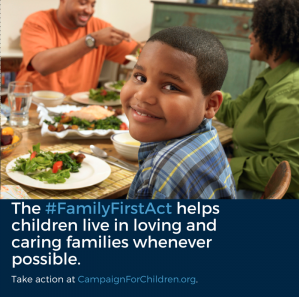 The bill also encourages the placement of children in foster care in the least restrictive, most family-like settings appropriate to their needs. This positive step would conform to the Annie E. Casey Foundation recommendations listed in a recently released report:
The bill also encourages the placement of children in foster care in the least restrictive, most family-like settings appropriate to their needs. This positive step would conform to the Annie E. Casey Foundation recommendations listed in a recently released report:
Kids Count Report: Too many children in child welfare are not living in families
“The Family First Prevention Services Act has the potential to have a far-reaching impact in the lives of foster children and youth and their families,” said Bruce Lesley, president of First Focus Campaign for Children. He commended Senator Hatch “for promoting evidence-based prevention services to keep children in family settings and out of foster care.”
Thank you, Senator Hatch, for your leadership on this issue!
For more information, see this fact sheet:
First Focus Fact Sheet: Family First Prevention Services Act
For 30 years now, Voices for Utah Children has called on our state, federal and local leaders to put children’s needs first. But the work is not done. The children of 30 years ago now have children of their own. Too many of these children are growing up in poverty, without access to healthcare or quality educational opportunities.
How can you be involved?
Make a tax-deductible donation to Voices for Utah Children—or join our Network with a monthly donation of $20 or more. Network membership includes complimentary admission to Network events with food, socializing, and opportunity to meet child advocacy experts. And don't forget to join our listserv to stay informed!
We look forward to the future of Voices for Utah Children and we hope you will be a part of our next 30 years.
Special thanks to American Express for sponsoring our 30th Anniversary Year. 


